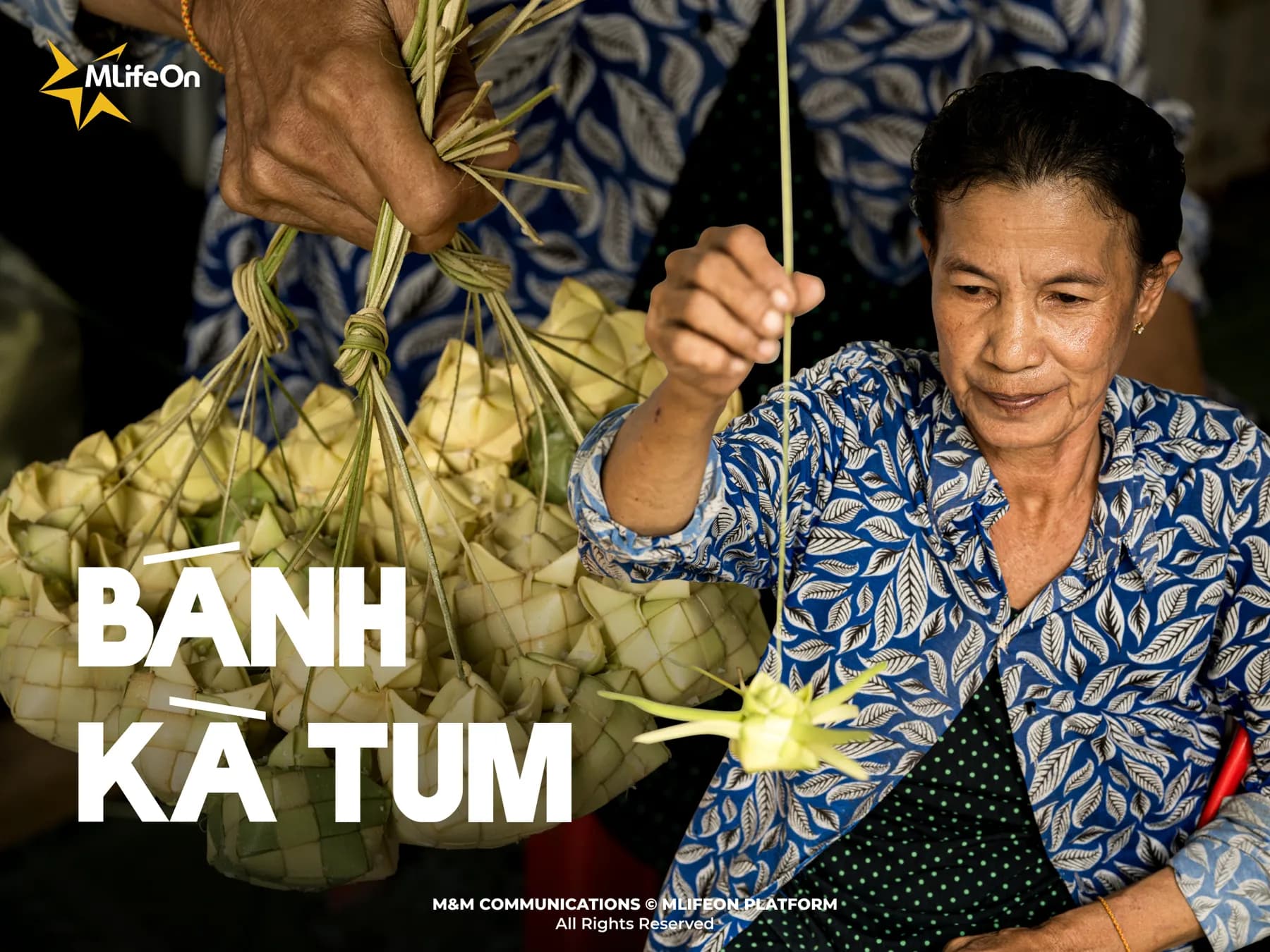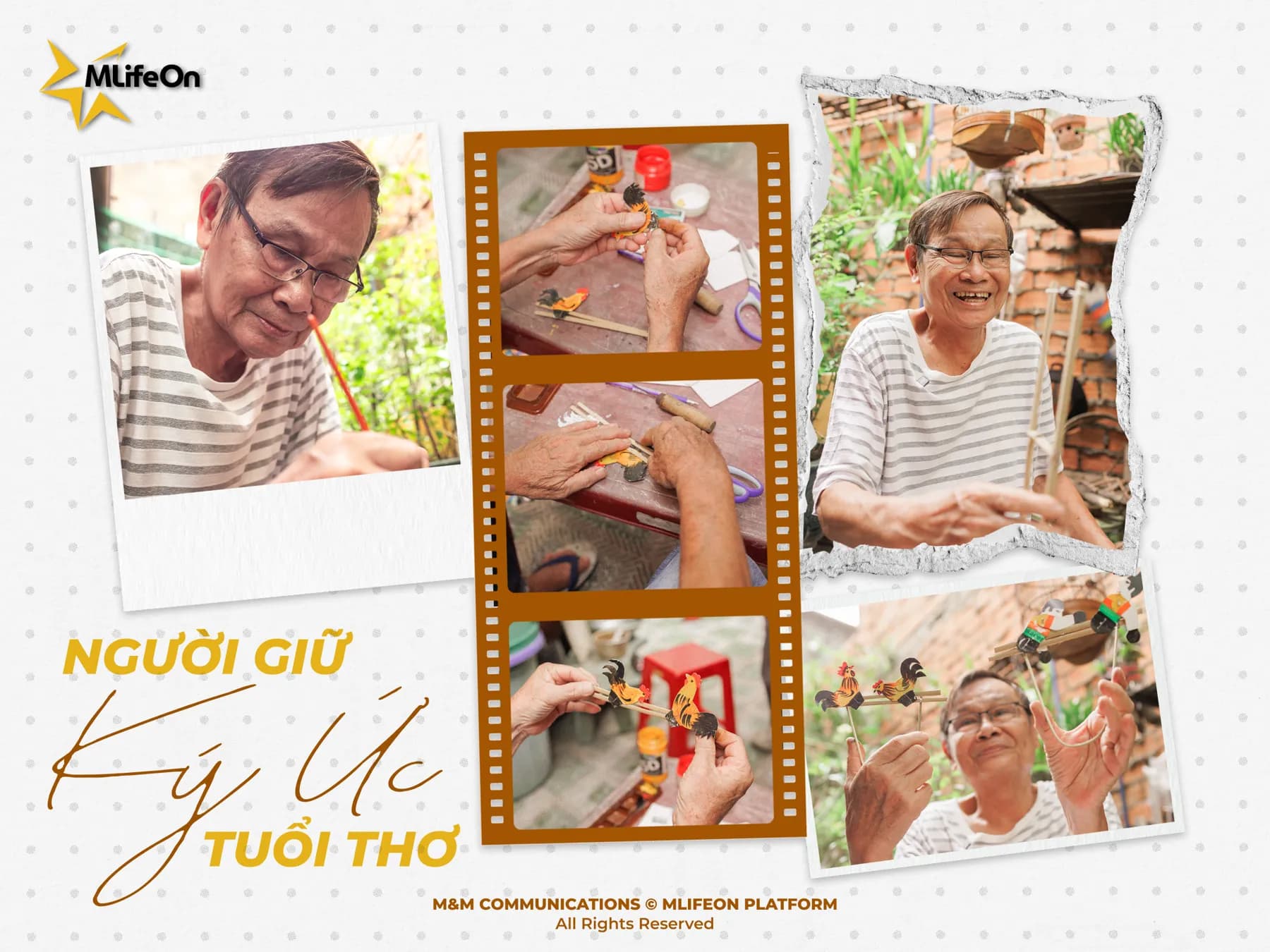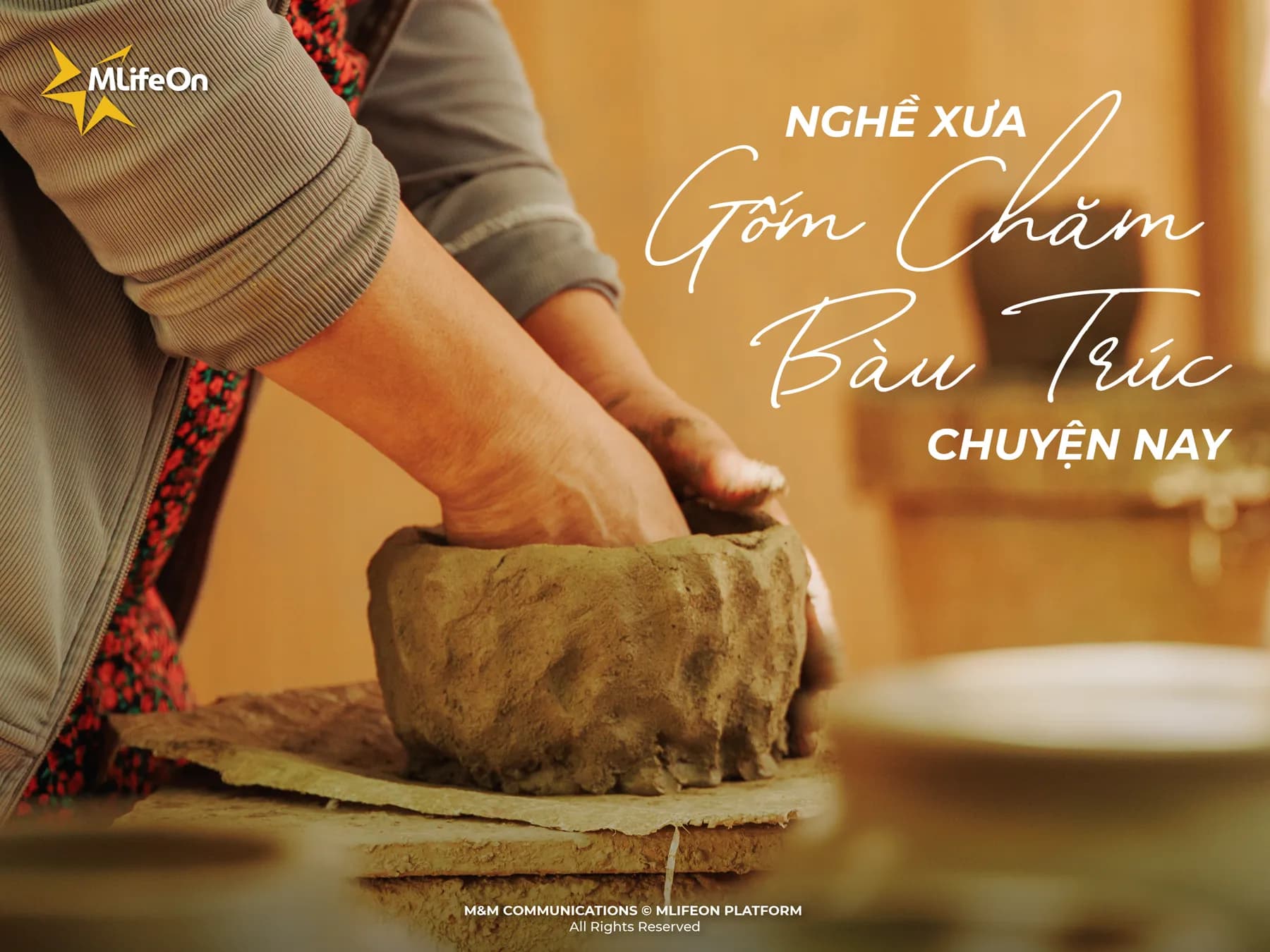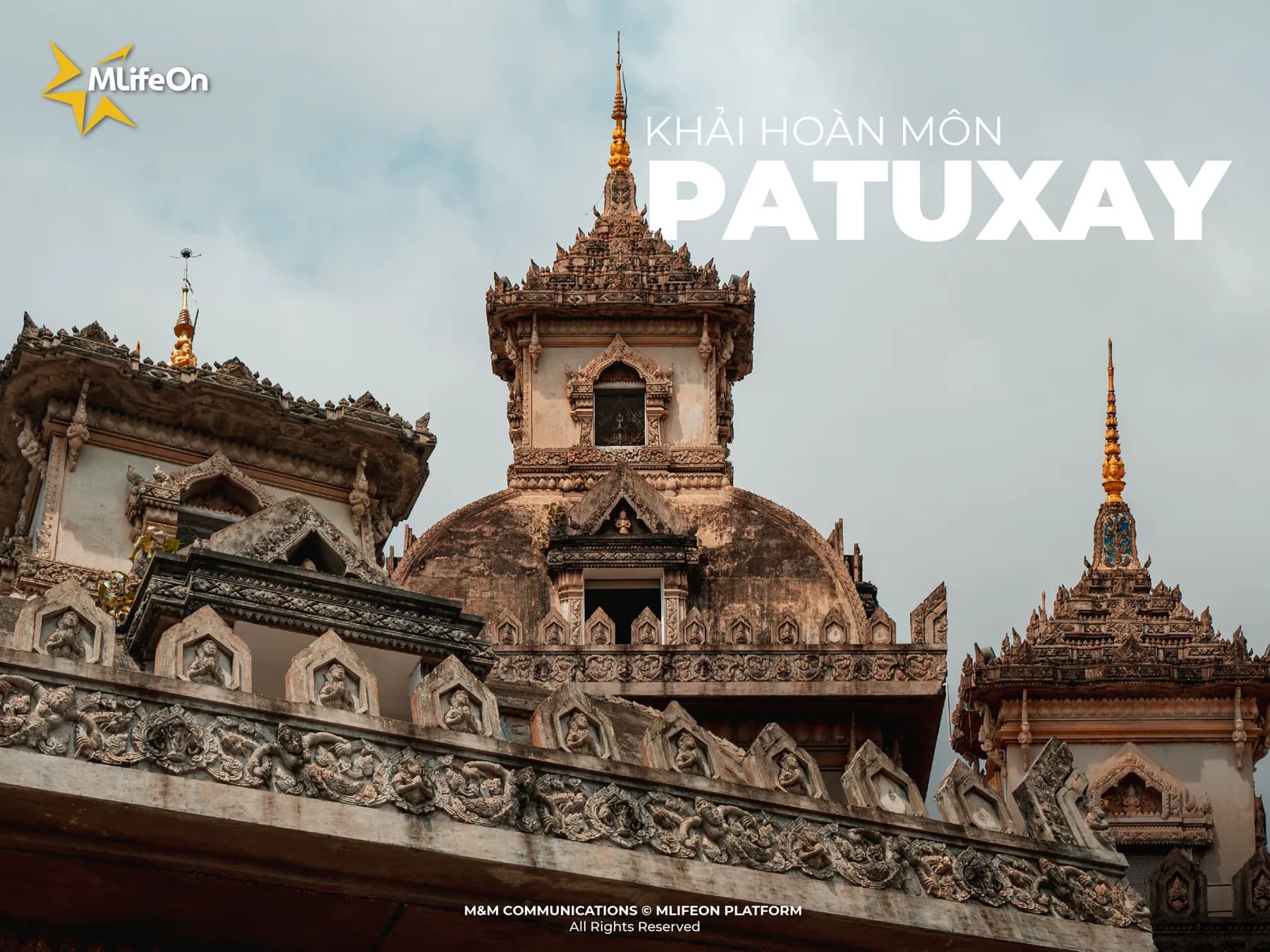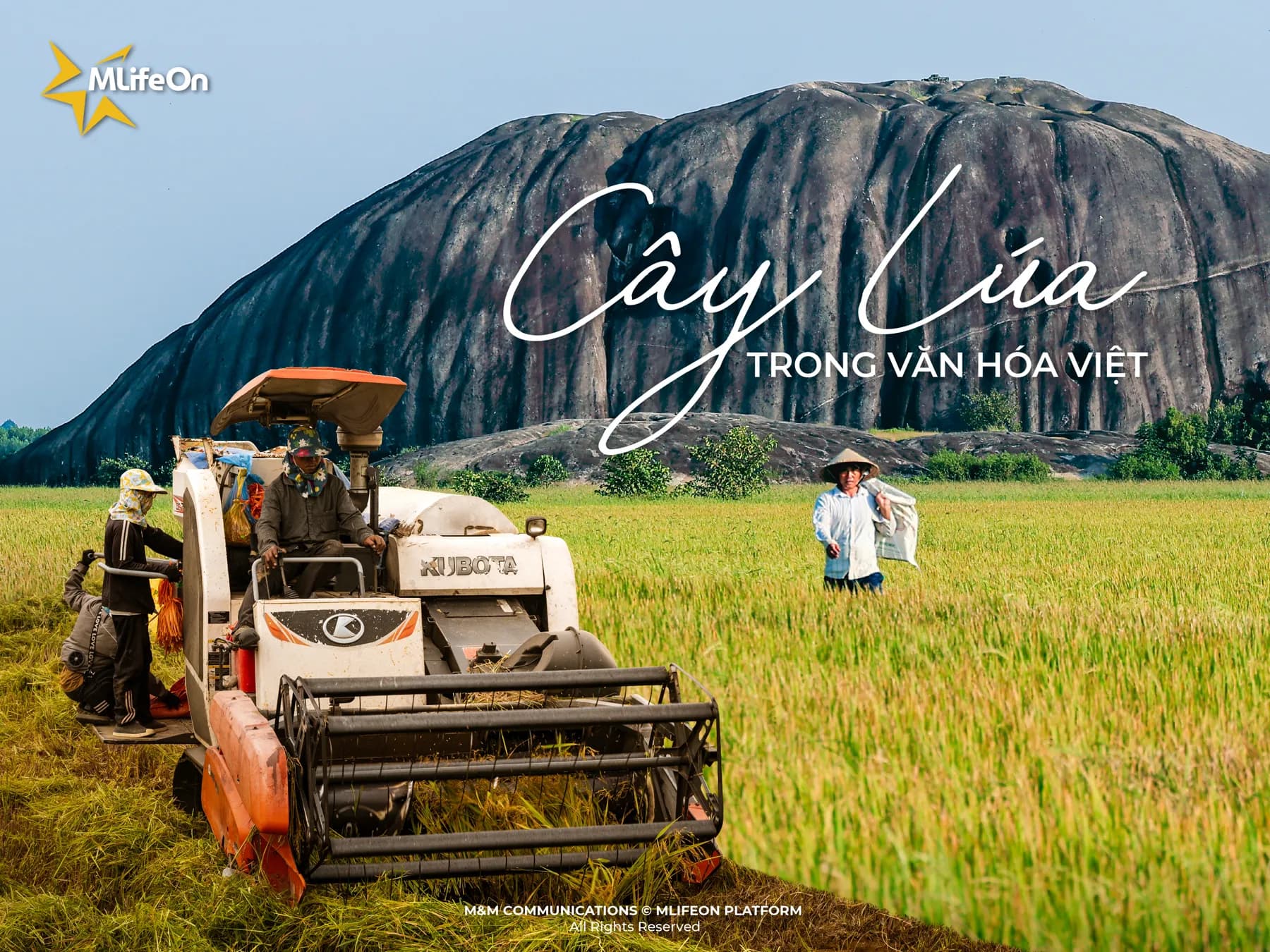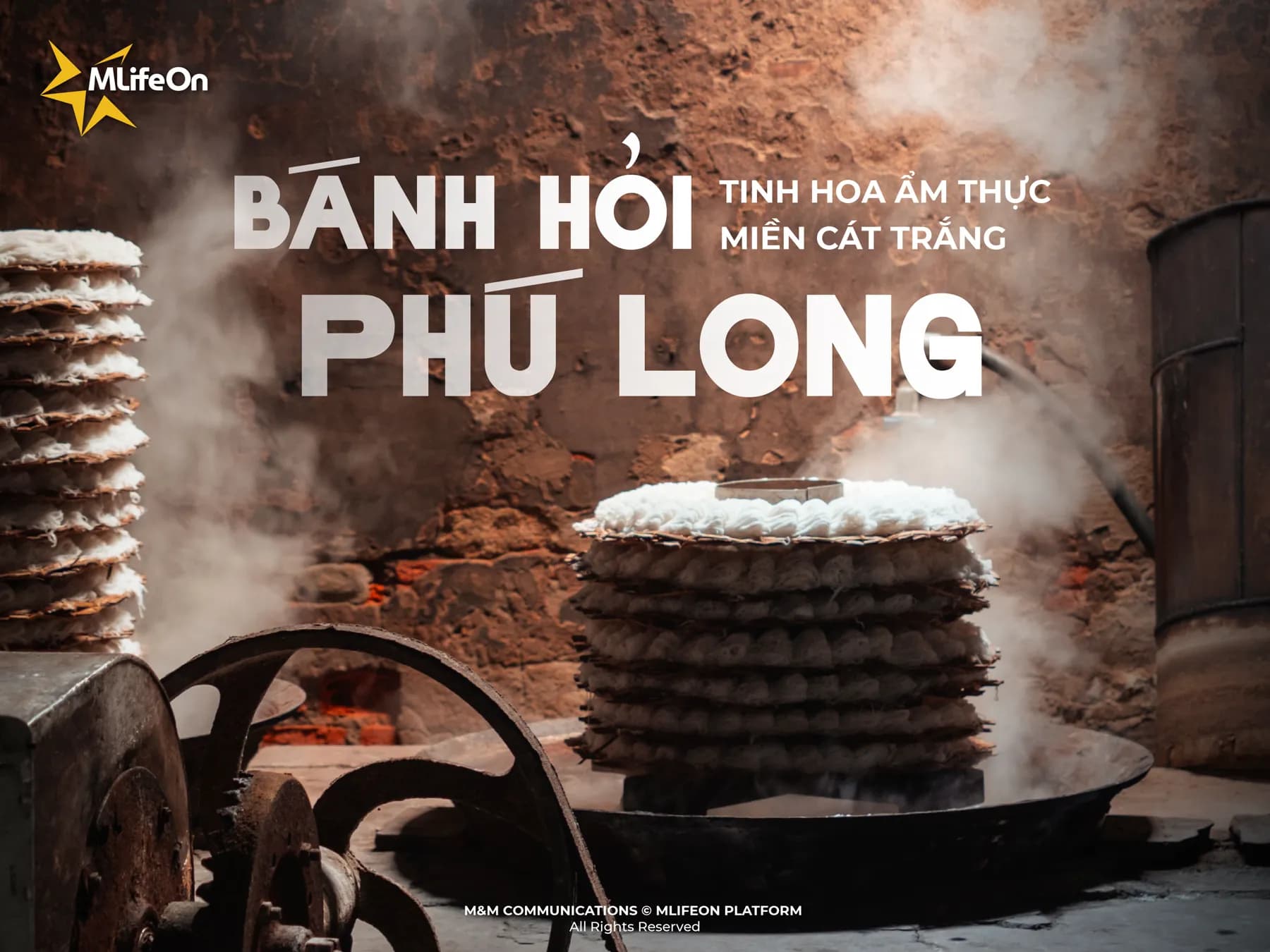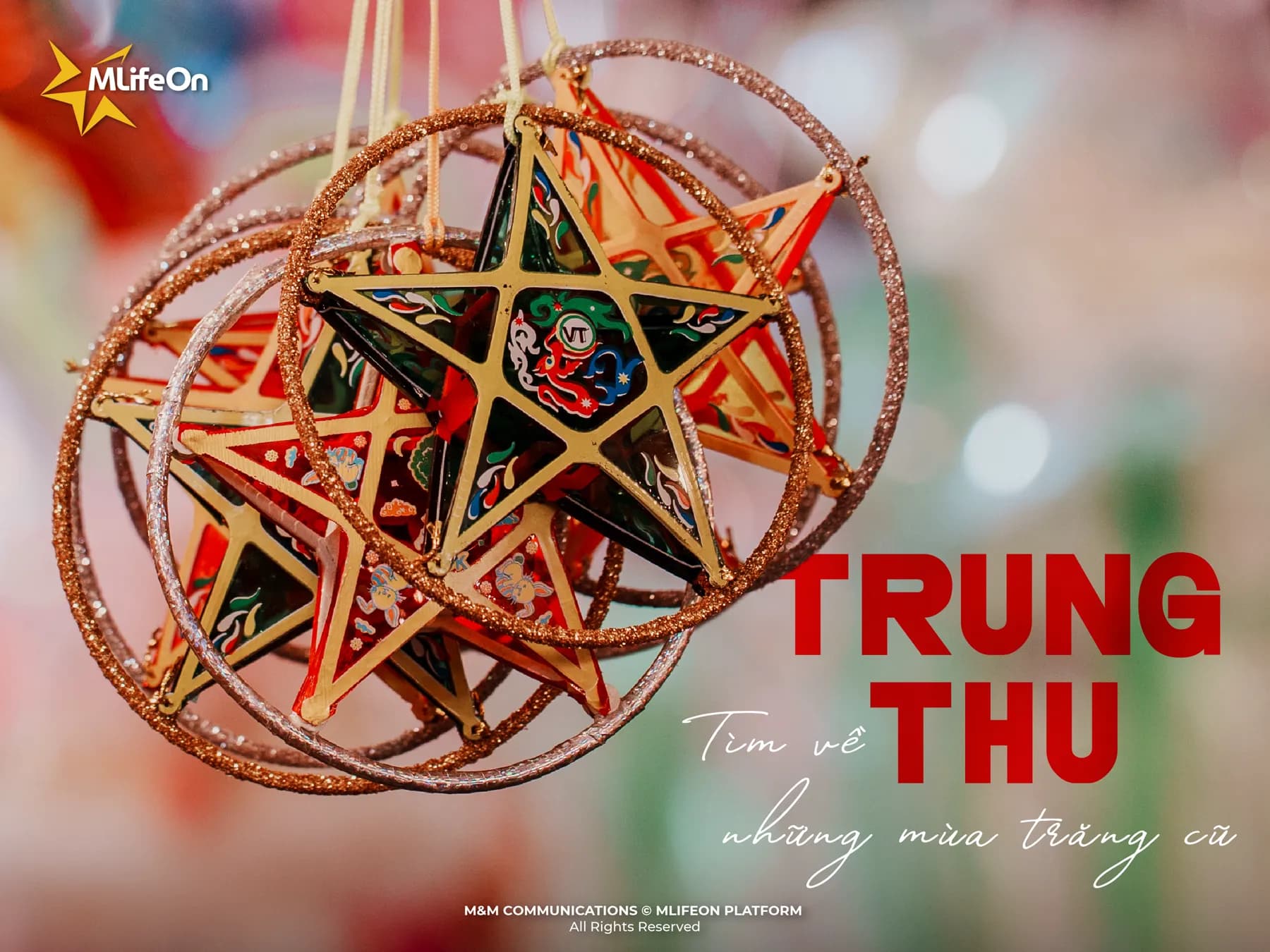Heading northwest, across the stone plateaus blanketed with clouds all year round, you will come across a truly unique sight: houses “dressed” in vibrant layers of golden corn, glistening under the sunlight. These are waxy corn houses, a distinctive form of architecture found only in the Northwest.
Join MLifeOn to see, feel, and listen to the stories of the land and people of the Northwest, told through these “golden homes.”
Mang Mu Corn Houses: A Natural Masterpiece of Thermal Insulation Architecture
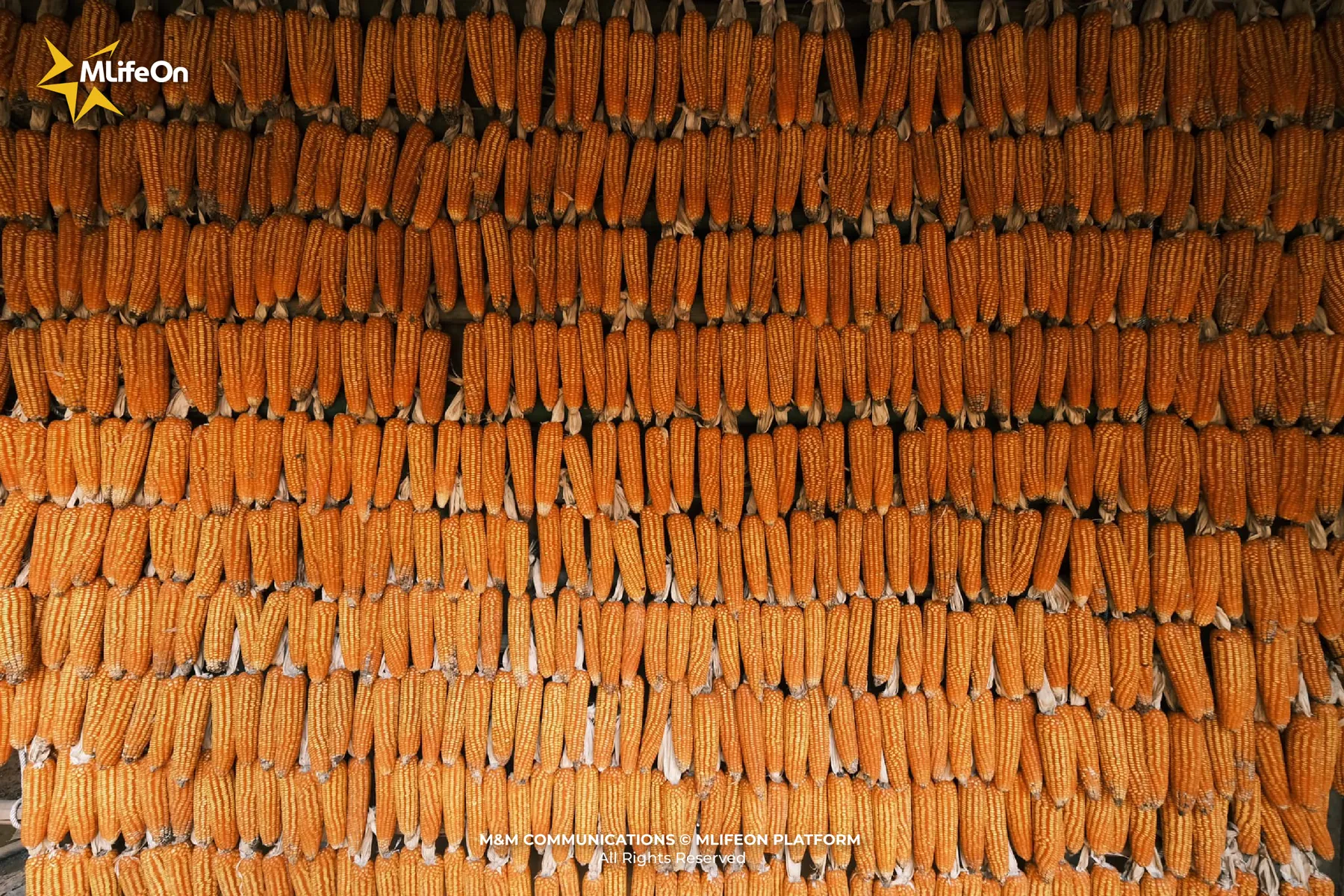
The Northwest has always been a fascinating destination for travelers, not only for its majestic landscapes and unique cultural identity but also for the mysteries and unfamiliar wonders of this frontier land of the nation. As songwriter Dương Trường Giang once wrote in a simple yet touching song:
“Ở một nơi xa xôi, bao quanh là núi đồi,
Chuyện tình yêu vẫn cứ như thế, sinh ra là có đôi”.
(Lặng Yên)
Perhaps it is because everything in the Northwest, though strange and unique, finds a natural harmony with the Land, with the People, and with Life here. The waxy corn house is one of the clearest examples of that.
“Waxy corn house” is the name given to dwellings built using a special architectural technique of the Hmong, Dao, and Lô Lô ethnic groups in the Northwest. Instead of constructing walls from stone or earth, they skillfully use harvested corn cobs to form a “layer” that wraps around the entire house. These cobs are hung in overlapping tiers, creating thick, sturdy, and golden walls that encase the home.
According to ethnographic researchers, this technique has existed for hundreds of years. It originated from a practical need: drying and preserving corn, the staple food of ethnic minority communities in the Northwest.
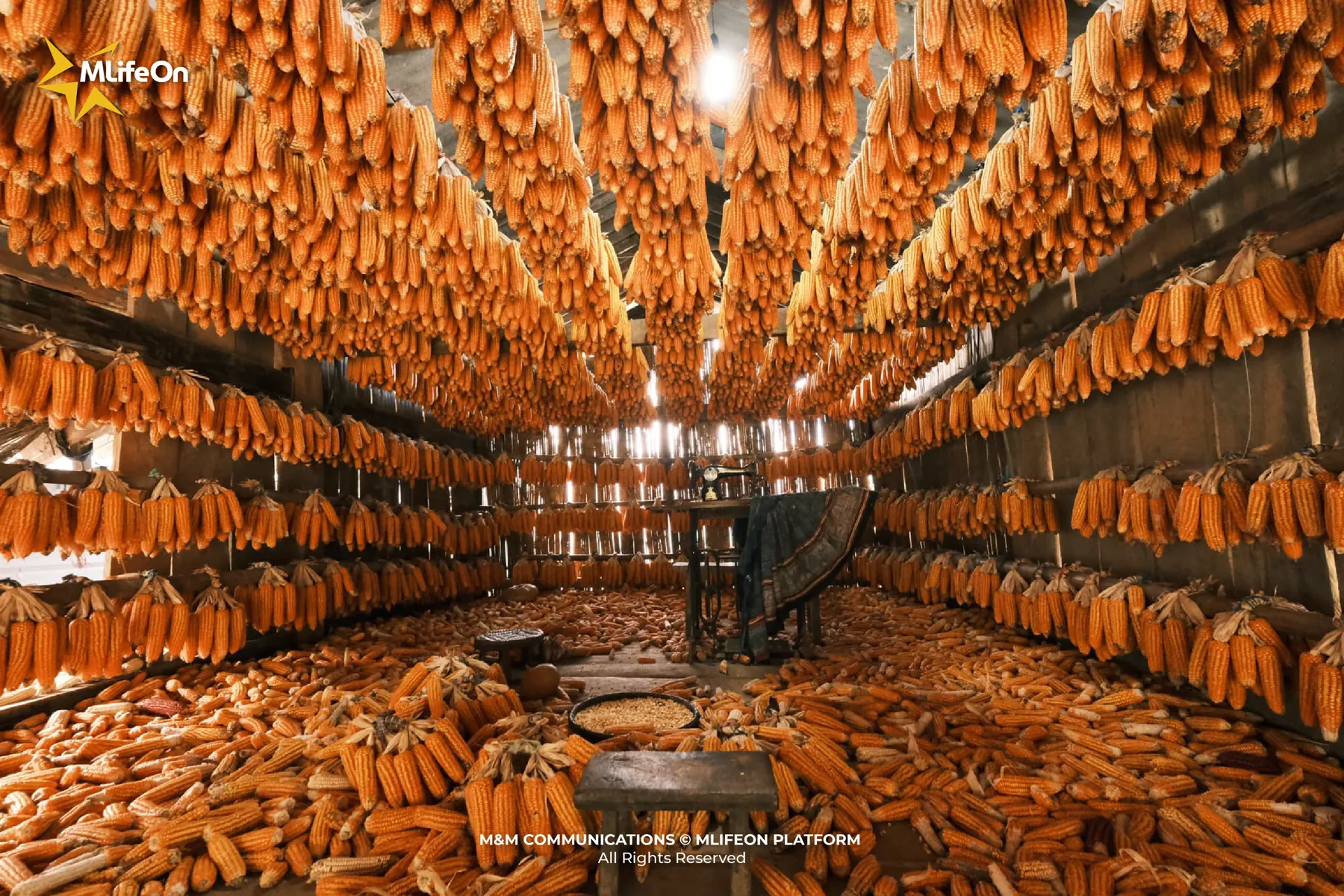
What is fascinating is that beyond its original purpose, the corn walls have “accidentally” become a natural insulation system for small houses in the harsh highland climate.
In winter, the corn walls keep the house warm, protecting against the biting cold of the mountains.
In summer, they block the scorching heat, bringing coolness and comfort to the home.
Perhaps that is why, for hundreds of years, waxy corn houses have quietly yet steadfastly endured in the vast Northwest. Within these golden homes, generations of Hmong, Dao, and Lô Lô people have been born and raised in peace amid the mountains.
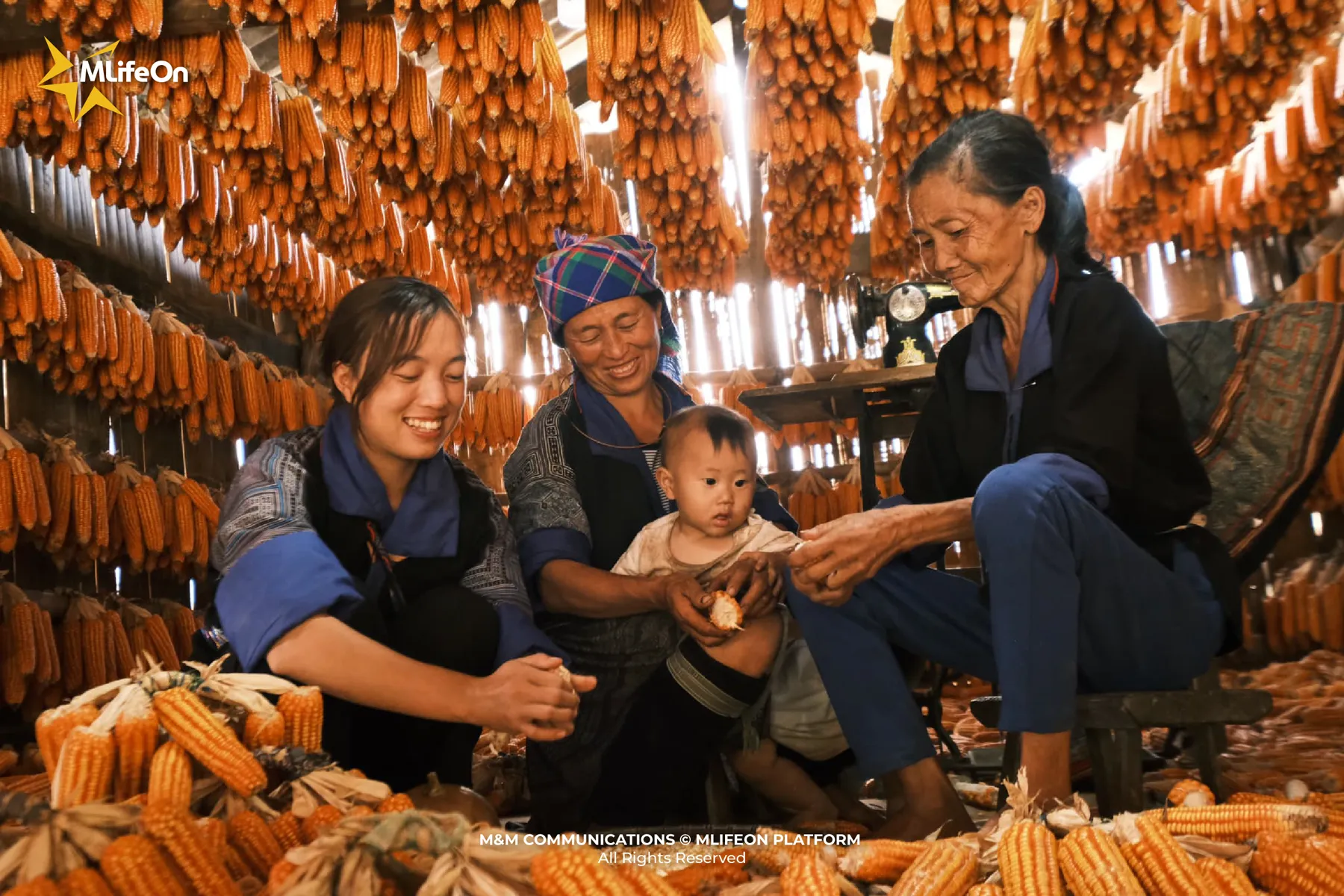
Mang Mu Corn Houses - A Unique Painting on Northwestern Culture
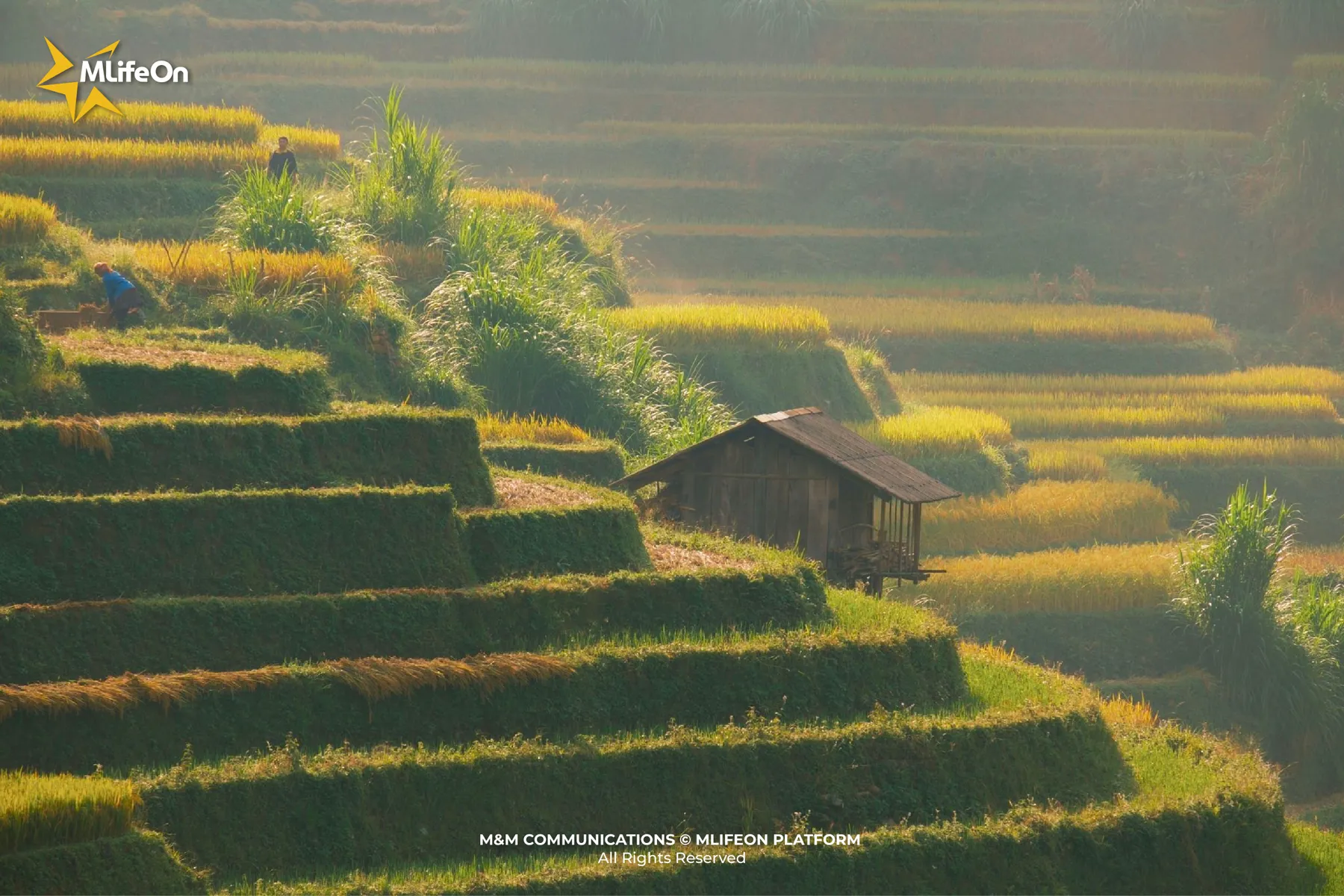
The Northwest captivates travelers not only with its majestic terraced fields, winding roads through misty clouds, or the vibrant Hmong skirts fluttering like butterflies in the peach blossom forests of spring.
It enchants visitors not only with the soulful melodies of leaf flutes, the rosy smiles of mountain maidens in the sunlight, or the plump fragrant plums of the season.
Yet it is the humble homes of the Northwest, where the culture and daily life of the locals are preserved, that truly make this land both familiar and fascinating, drawing travelers from near and far.
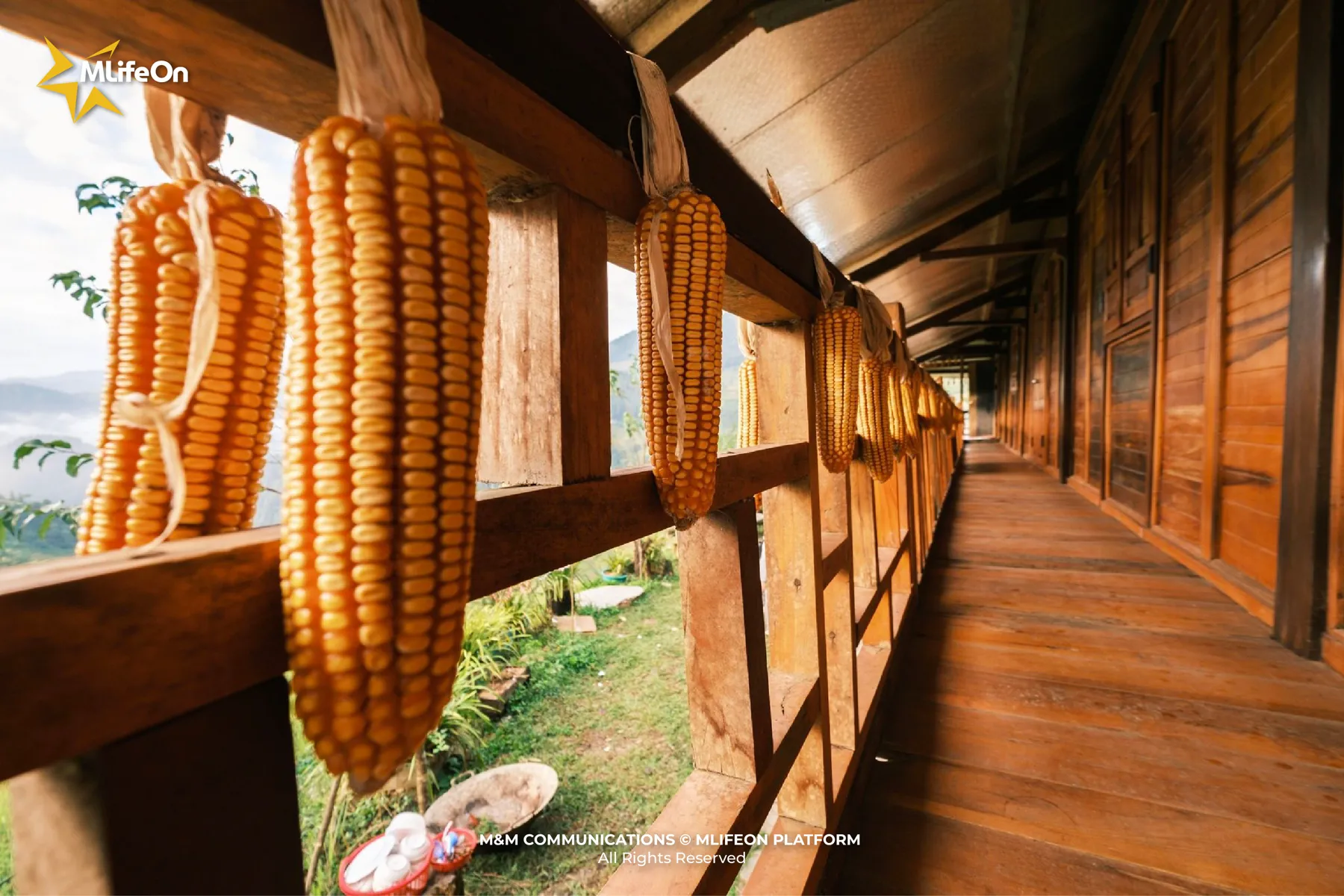
The Mang Mu Corn Houses is not only a unique form of architecture but also an essential part of the culture, spirituality, and daily life of the people here. Every ear of corn hanging on the roof carries a profound spiritual meaning. It is a prayer for a bountiful harvest and a prosperous life for the community.
Within these corn houses, warm family meals are shared. From men men, a traditional dish made from corn by the Hmong people of the Northwest, to corn porridge and fragrant corn wine brewed from the golden kernels on the roof, all reflect the way the people of the Northwest celebrate abundance and togetherness within their families, clans, villages, and homeland.
The house adorned with golden corn is a colorful yet one of a kind painting of the culture of the Northwest. It portrays a land that is sincere, strong, and warm, while still carrying a touch of romance amid the harshness of the frontier.
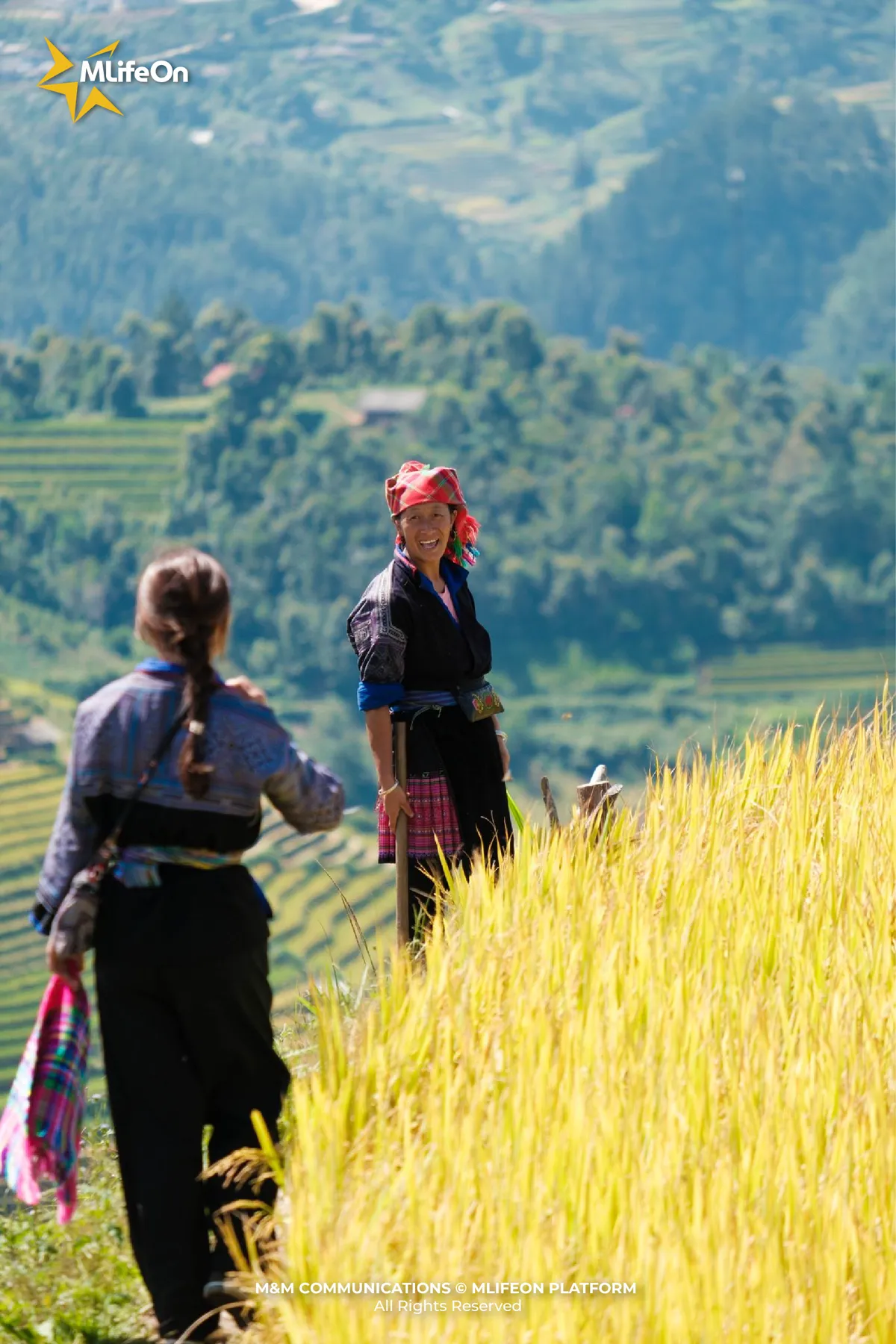
The Tourism Appeal of the Story of the “Golden House”
With their unique beauty and profound cultural value, the Mang Mu Corn Houses have become a captivating highlight of tourism in the Northwest.
When visiting the house with the distinctive name “Mang Mu Corn Houses” owned by Giang A Sua at the top of Khau Pha Pass in Mu Cang Chai, Yen Bai (now part of Lao Cai province), I was truly amazed by the natural allure of its golden walls made from thousands of corn cobs. It was a spectacular and beautiful sight to behold. And just like cloud hunting, I considered it a wonderful “test of luck” gift for myself during that unforgettable journey.
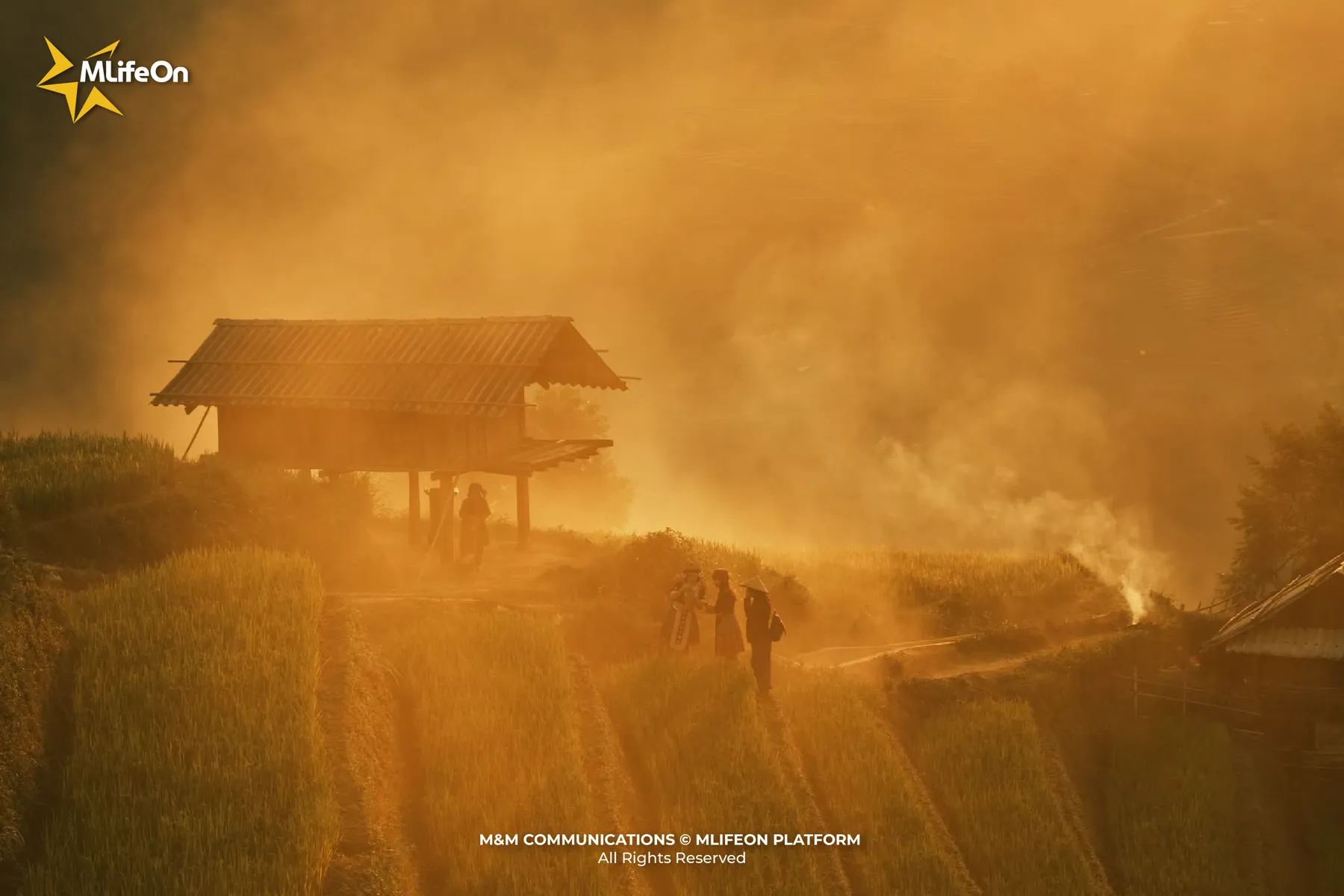
And did you know, with only 10,000 VND, you can “check in” at a house whose architecture has been praised by many travel magazines as “one of the most creative and unique expressions of harmony between people and nature.”
The travel stories about the “Golden House” have spread far and wide, inspiring many visitors to come and witness it with their own eyes. Simple as it may seem, beyond the golden corn walls, it is the peaceful life, the modest spirit, and the closeness to both nature and the authentic people here that truly create its charm and healing value for those who come.

If you also want to witness the beauty of these “Golden Houses” for yourself, come to the Northwest between October and December, the season of ripened corn and golden rice fields. You can find the “Mang Mu Corn Houses” in the villages of the Hmong, Dao, and Lo Lo people in Ha Giang, Lao Cai, Cao Bang, Lang Son, and more.
Try staying in a local corn house homestay, where you will have the chance to not only admire but also take part in the daily life of the communities, and enjoy the unique flavors of Northwest cuisine.
Or simply capture a photo as beautiful as My by the window in spring.
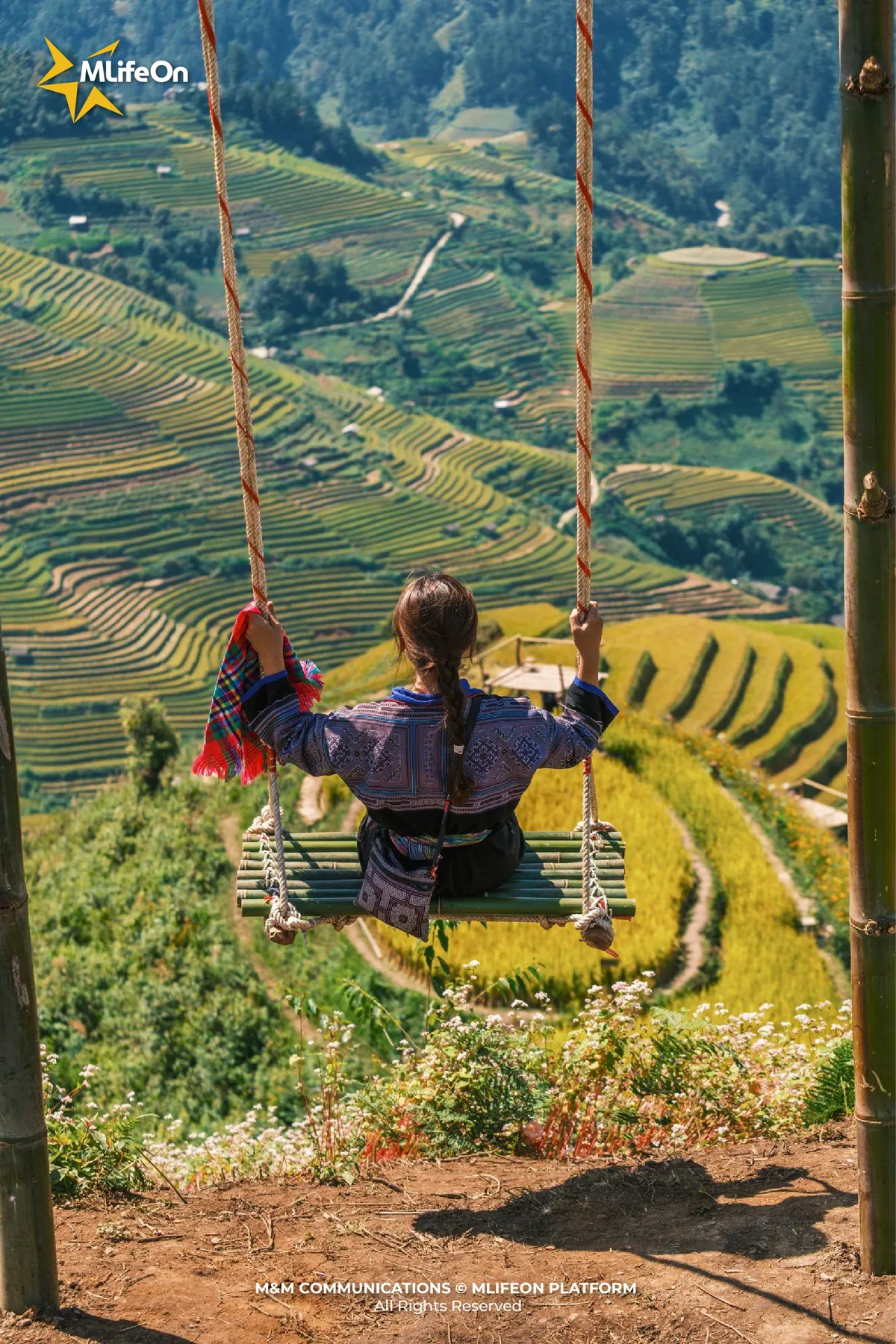
Conclusion
Until now, although not officially recognized by any organization as a cultural or architectural heritage, the Mang Mu Corn House has been known as a vivid symbol of the culture and life of the Northwest. Its appeal does not come from titles, but from its inherent beauty and the profound creativity of the local people.
It stands as a testament to a way of life in harmony, where humans do not conquer but lean on nature to exist. This very essence has drawn the attention of journalists, filmmakers, and travelers in search of authenticity.
Go, come, and experience the true treasures shining on the mountain passes of the Northwest.
—---
CREDIT:
- Photography: Luan Nguyen
- Content: Minh Yen
- Design: Phuong Nguyen




